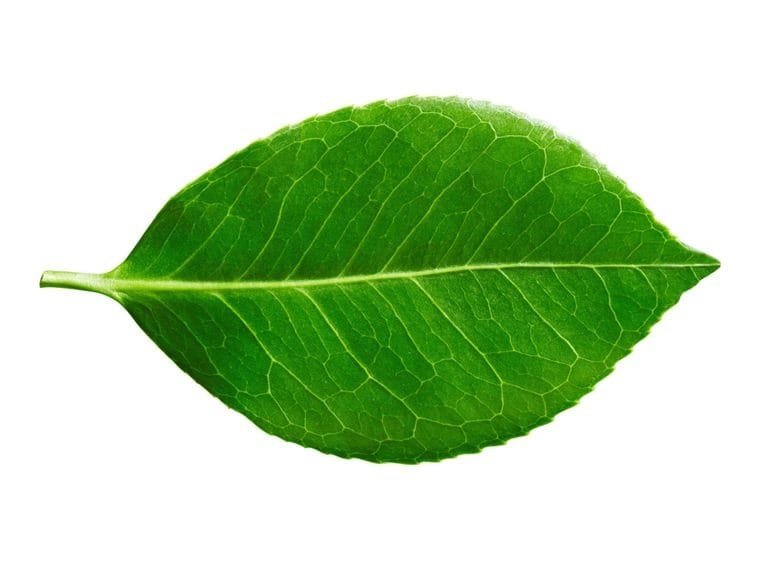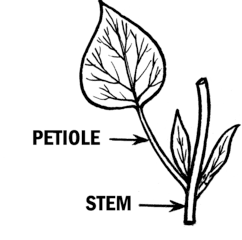INTRODUCTION
The leaves is a crucial vegetative organ of angiosperms (flowering plants), playing a central role in photosynthesis, respiration, and transpiration. It is typically flat and green due to the presence of chlorophyll and arises from the node of a stem or branch. Leaves display a wide range of forms and structures adapted to different environments, making them valuable in identifying and classifying plant species. They help regulate the plant’s temperature and water balance and are often the first indicators of a plant’s health. Understanding the morphology of leaves offers insights into plant evolution, physiology, taxonomy, and ecological adaptation.
SUMMARY OF LEAF MORPHOLOGY
- Leaves are essential plant organs responsible for photosynthesis, transpiration, and gas exchange.
- They vary in shape, structure, venation, and arrangement, aiding in plant identification and adaptation.
- Modified leaves perform additional roles like protection, climbing, and food storage in various plant species.
Table of Contents
DEFINITION OF LEAF
A leaf is a lateral, generally flattened, green structure borne on the stem or its branches. It develops from the node and typically has a bud in its axil. Leaves are the primary sites for photosynthesis and transpiration in most plants. They also serve other functions such as respiration and protection. Morphologically, a typical leaf consists of three distinct parts: the leaf base, the petiole, and the lamina or blade. Each part contributes to the leaf’s functions, from anchoring it to the stem, transporting nutrients, and optimizing light capture for photosynthesis.
TYPES OF LEAF
1. Simple Leaf

A simple leaf has a single, continuous lamina (leaf blade) that is not divided into leaflets. Even if lobed, the lobes do not reach the midrib, and there is only one axillary bud. Simple leaves can be seen in plants like mango, guava, and hibiscus. Their shape, size, and margins may vary greatly depending on environmental adaptations.
2. Compound Leaf

In a compound leaf, the lamina is divided into distinct segments called leaflets. Each leaflet appears like an individual leaf but lacks an axillary bud at its base. Compound leaves are generally found in plants that grow in harsh or dry environments, where such division reduces wind resistance and water loss.
2.1 Pinnately Compound Leaf
In this type, leaflets are arranged along both sides of a central axis (rachis), resembling the structure of a feather. This arrangement allows for flexibility and better adaptation to windy conditions. Example: Neem, Rose.
2.2 Palmately Compound Leaf
Here, all leaflets arise from a single point at the tip of the petiole, spreading like the fingers of a hand. This type offers even distribution of photosynthetic activity. Example: Silk cotton, Bombax.
PARTS OF A TYPICAL LEAF
1. Leaf Base
The leaf base is the lowermost part that attaches the leaf to the stem or branch. In some plants, it is swollen and known as a pulvinus (e.g., legumes), which helps in leaf movements. It may also bear stipules—small leaf-like structures that can serve protective or photosynthetic roles depending on the plant.
2. Petiole

The petiole is the stalk that connects the leaf blade to the stem. It acts like a flexible hinge, allowing the leaf to flutter in the wind, which reduces heat and water stress. In some plants like spinach, the petiole is short or absent, while in others like cotton, it is long and prominent.
3. Lamina (Leaf Blade)
The lamina is the wide, flat, green portion of the leaf where photosynthesis, transpiration, and gas exchange occur. It has veins (vascular bundles) and veinlets for mechanical support and the transport of water, minerals, and food. The shape and size of the lamina vary greatly and are important for plant classification.
VENATION IN LEAF
Venation is the pattern of veins and veinlets in the leaf blade, providing structural support and aiding in nutrient and water transport.
1. Reticulate Venation
The veins form a complex, net-like structure. This venation is typical of dicot plants and provides more surface area for efficient transport and flexibility. Example: Guava, Peepal.
2. Parallel Venation
The veins run parallel to one another from the base to the apex of the leaf. Found mainly in monocot plants, this venation style is simple and helps in quick water movement. Example: Grass, Banana.
PHYLLOTAXY (LEAF ARRANGEMENT)
Phyllotaxy is the arrangement of leaves on a stem or branch to maximize exposure to sunlight.
1. Alternate Phyllotaxy
A single leaf grows at each node alternately. This pattern helps minimize shading between leaves and is common in sunflower and mustard.
2. Opposite Phyllotaxy
A pair of leaves grows opposite each other at each node. This allows for balanced growth and is seen in plants like guava and guelder rose.
3. Whorled Phyllotaxy
More than two leaves arise from a single node, forming a whorl. It provides dense foliage and is common in plants like Alstonia.
LEAF SHAPE, MARGIN, APEX, AND SURFACE
Leaves vary in shape (ovate, lanceolate, cordate), margin (entire, dentate, serrated), apex (acute, obtuse, acuminate), and surface texture (glabrous, pubescent, hairy). These traits are taxonomically significant and often species-specific, helping in plant identification.
MODIFICATIONS OF LEAVES
Leaves are modified for a variety of non-photosynthetic functions such as climbing, protection, food storage, and insect capture.
1. Leaf Tendrils
These are slender, coiled structures that help the plant to climb. Tendrils arise from leaves or leaflets in plants like pea and garden nasturtium.
2. Leaf Spines
Spines are sharp, rigid modifications of leaves that reduce water loss and provide defense against herbivores. Example: Cactus, Pineapple.
3. Leaf Pitcher
Some leaves are modified into pitcher-shaped structures that trap and digest insects for nutrients. These adaptations are typical of carnivorous plants like Nepenthes.
4. Leaf Hooks
In certain climbing plants, leaves develop into hook-like structures to support climbing. Example: Bignonia.
5. Phyllode
In plants like Australian Acacia, the petiole becomes flattened and performs the function of a leaf due to the reduction of the lamina.
6. Storage Leaves
Leaves in some plants are thick and fleshy to store water and nutrients. Example: Onion, Aloe vera.
FUNCTIONS OF LEAVES
Leaves are multifunctional organs essential to plant health and survival.
- Photosynthesis: Leaves capture sunlight and use chlorophyll to convert carbon dioxide and water into glucose and oxygen.
- Transpiration: The process of water vapor loss through stomata helps in nutrient movement and temperature regulation.
- Respiration: Gas exchange through stomata allows for cellular respiration, essential for energy production.
- Storage: Some leaves store food, water, or both to support the plant during stress.
- Reproduction: Certain plants like Bryophyllum use leaves for vegetative reproduction via buds on the margins.
CONCLUSION
The leaf is one of the most important and versatile organs of angiosperms, involved in energy production, gas exchange, and water balance. Its varied shapes, structures, and modifications highlight its evolutionary adaptability and ecological significance. Studying leaf morphology not only aids in identifying and classifying plants but also provides vital information for agriculture, horticulture, environmental science, and plant breeding programs. An in-depth understanding of leaves enhances our knowledge of plant function and improves our ability to utilize plant resources sustainably.
Frequently Asked Questions (FAQs)
What is the function of a leaf in plants?
Leaves perform essential roles such as photosynthesis, respiration, and transpiration. They help the plant produce food, exchange gases, and regulate water loss.
What are the main parts of a typical leaf?
A typical leaf has three main parts: the leaf base (attaches to stem), the petiole (leaf stalk), and the lamina or blade (the flat, green part for photosynthesis).
What is the difference between simple and compound leaves?
A simple leaf has one undivided blade, while a compound leaf has multiple leaflets attached to a single petiole. Each leaflet lacks an axillary bud.
Related Articles

